Creative cuisine highlighting each season
We prepare meals using fresh, safe and trusted local ingredients chosen with the utmost care centered around rice and vegetables grown by the contracted farmers and fresh seafoods from Japan Sea.
Please savor each of our dishes that are carefully created as we pay respect to the subtle changes in seasons.
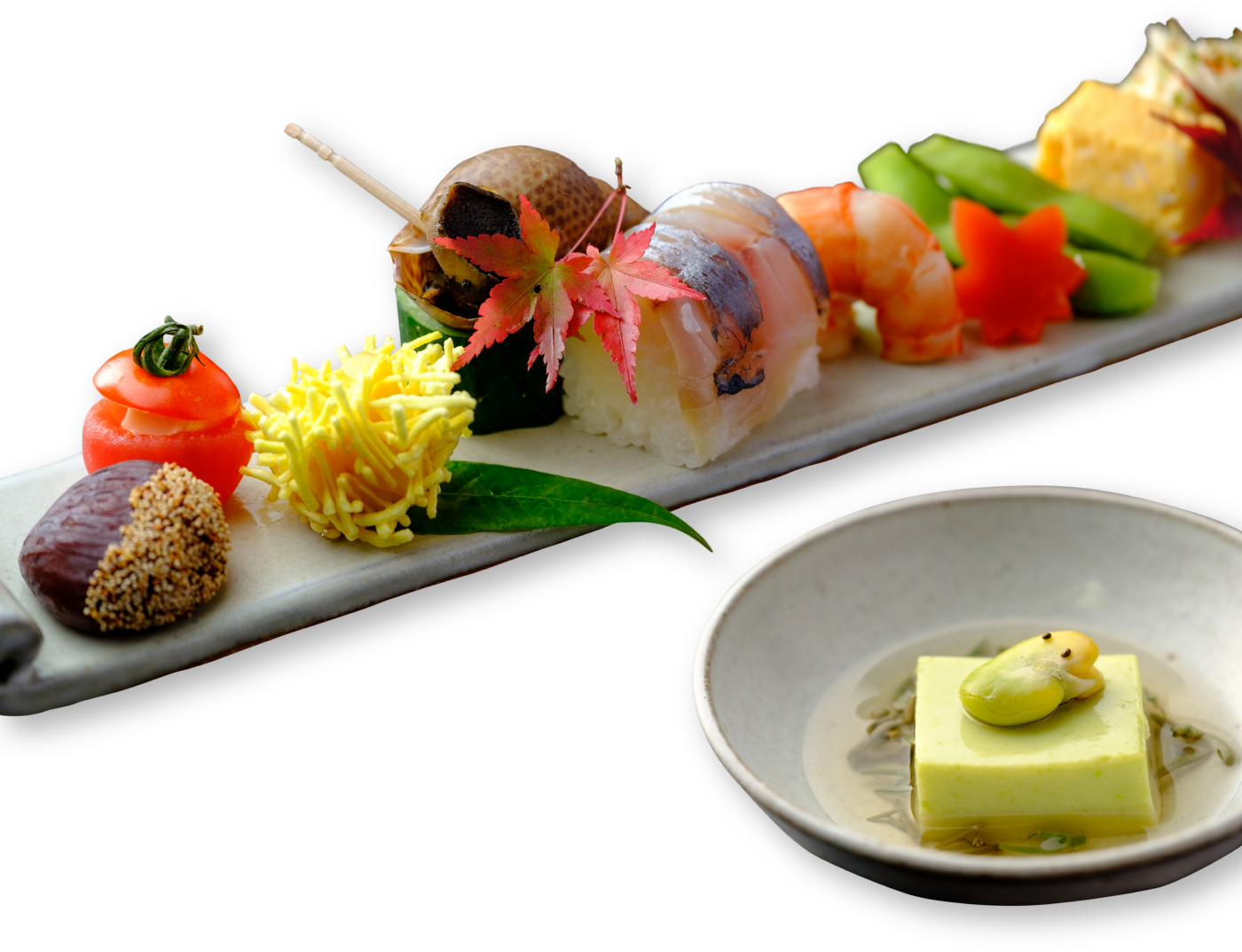
•Please notify us of any allergies before or right after booking via a phone or email.
•Special diets or likes and dislikes of certain foods and seasonings outside of the allergy issues will not be accommodated.
*Adjustments in seasoning such as sugar, salt, vinegar, soy sauce and miso, gluten free diet or the use of seafood dashi stock will not be accommodated.
-
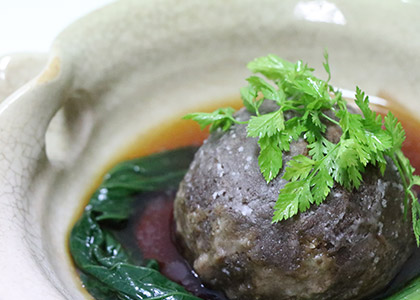
Mitoku soba dumplings
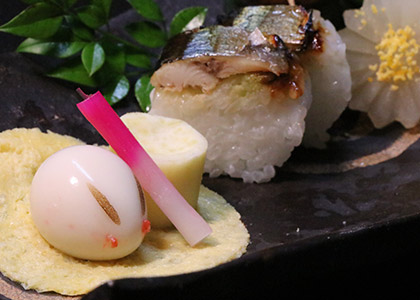
Nagatsuki Appetizer "Tsukimi"
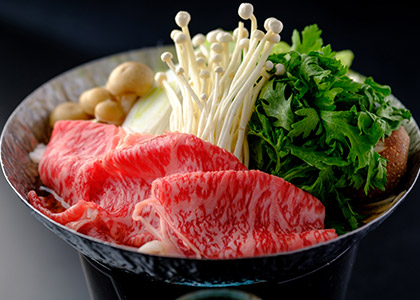
Tottori Wagyu Beef and Mushroom Small Hot Pot
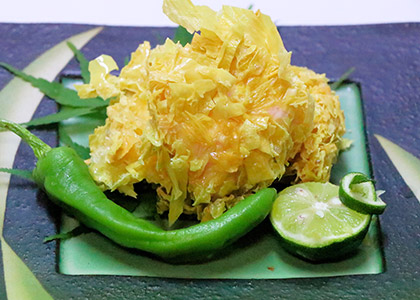
Fried tofu skin

Mitoku soba dumplings

Nagatsuki Appetizer "Tsukimi"

Tottori Wagyu Beef and Mushroom Small Hot Pot

Fried tofu skin

Mitoku soba dumplings
Autumn cuisine
We create an autumn menu using locally sourced seasonal nuts, mushrooms, vegetables and seafoods. For example, Misasa Onsen’s specialty “tochi mochi (horse chestnut rice cakes)” and striped sea bream, our contracted farmer’s brand shiitake mushroom “Kinkō 115 Sun Shade Prince”, and sand dune grown nagaimo (Japanese yam) “nebarikko.” Nebarikko has a rich flavor and slimy texture like wild yam, and sweetness of a Japanese taro.
-
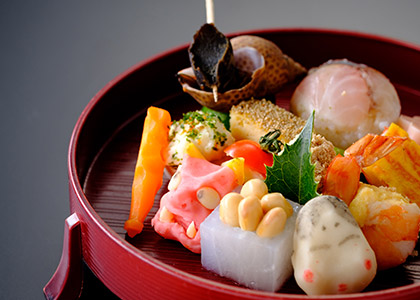
Kisaragi appetizer "Setsubun"
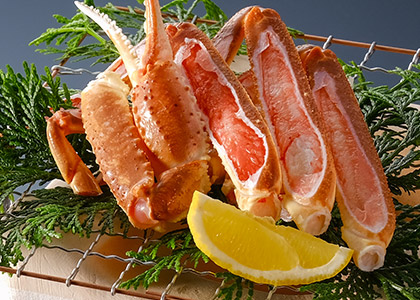
Grilled snow crab
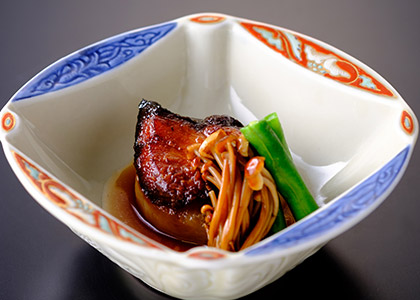
Yellowtail radish
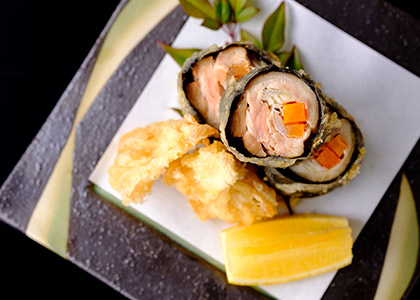
Isobe grilled chicken

Kisaragi appetizer "Setsubun"

Grilled snow crab

Yellowtail radish

Isobe grilled chicken

Kisaragi appetizer "Setsubun"
Winter cuisine
During the winter, our bespoke menus include seasonal Queen crabs and blackthroat seaperch. Japanese sandfish, called hatahata is a family of Japanese sea bass. Hatahata is a famous local specialty. From toshikoshi (year-crossing) Misasa soba on New Year’s Eve to the feast on January 3rd, we will create special menus for 4 days to celebrate the New Years.
-
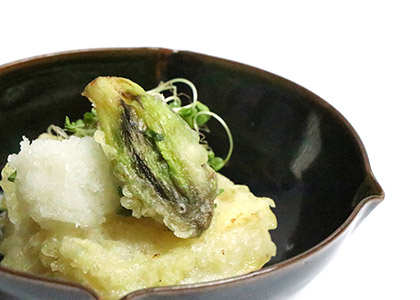
Fukinoto tempura
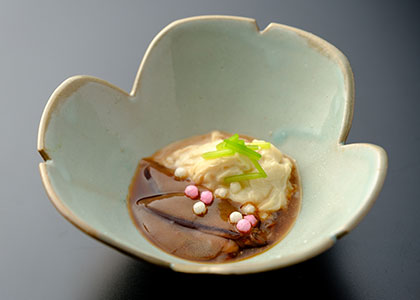
Firefly squid and bean curd sheets dressed in sauce
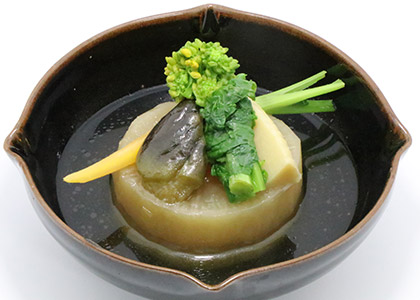
Boiled rape blossoms and radish
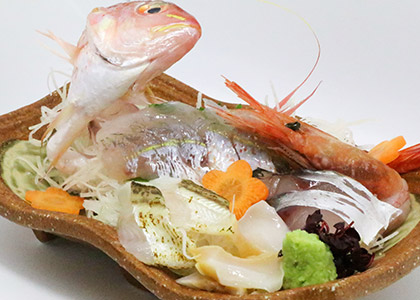
Itoyori sashimi

Fukinoto tempura

Firefly squid and bean curd sheets dressed in sauce

Boiled rape blossoms and radish

Itoyori sashimi

Fukinoto tempura
Spring cuisine
We will transform flavorful wild edible plants into delicate tempura, fresh ohitashi (blanched and seasoned), and savory aemono (dressed), all of which are full of spring flavors. Needless to say, we incorporate other local vegetables, seafoods and meats in our creative menus. “Tottori sand dune rakkyō (pickled pearl onions)” are available in the bespoke menu. Please savor all of what Tottori has to offer.
-
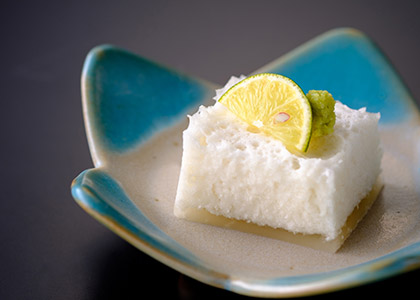
Sand dune Chinese yam tofu with kabosu dressing
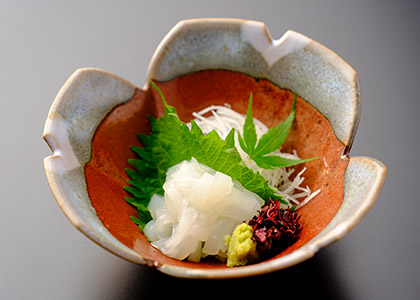
Shiroika cuttlefish sashimi
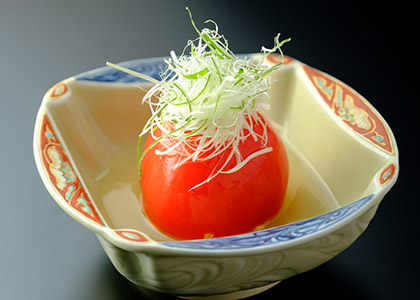
Shrimp dumpling wrapped in tomato
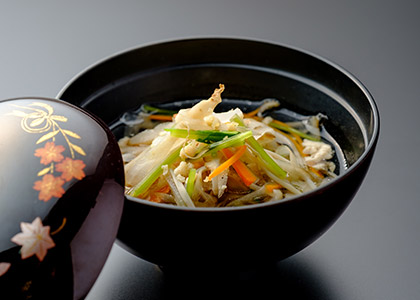
Sawajiru

Sand dune Chinese yam tofu with kabosu dressing

Shiroika cuttlefish sashimi

Shrimp dumpling wrapped in tomato

Sawajiru

Sand dune Chinese yam tofu with kabosu dressing
Summer cuisine
Summer is the season for Tottori’s famous “Iwagaki oysters” and “Shiroika cuttlefish.” We incorporate these ingredients in the bespoke menus. Sacred mountain Daisen provides the local farmers fertile red soil. We source our fresh and seasonal ingredients such as brightly colored vegetables locally and create a traditional course menu including warm dishes, stewed dishes, and an ensemble dish of individually cooked ingredients.
-

Mitoku soba dumplings

Nagatsuki Appetizer "Tsukimi"

Tottori Wagyu Beef and Mushroom Small Hot Pot

Fried tofu skin

Mitoku soba dumplings

Nagatsuki Appetizer "Tsukimi"

Tottori Wagyu Beef and Mushroom Small Hot Pot

Fried tofu skin

Mitoku soba dumplings
Autumn cuisine
We create an autumn menu using locally sourced seasonal nuts, mushrooms, vegetables and seafoods. For example, Misasa Onsen’s specialty “tochi mochi (horse chestnut rice cakes)” and striped sea bream, our contracted farmer’s brand shiitake mushroom “Kinkō 115 Sun Shade Prince”, and sand dune grown nagaimo (Japanese yam) “nebarikko.” Nebarikko has a rich flavor and slimy texture like wild yam, and sweetness of a Japanese taro.
-

Kisaragi appetizer "Setsubun"

Grilled snow crab

Yellowtail radish

Isobe grilled chicken

Kisaragi appetizer "Setsubun"

Grilled snow crab

Yellowtail radish

Isobe grilled chicken

Kisaragi appetizer "Setsubun"
Winter cuisine
During the winter, our bespoke menus include seasonal Queen crabs and blackthroat seaperch. Japanese sandfish, called hatahata is a family of Japanese sea bass. Hatahata is a famous local specialty. From toshikoshi (year-crossing) Misasa soba on New Year’s Eve to the feast on January 3rd, we will create special menus for 4 days to celebrate the New Years.
-

Fukinoto tempura

Firefly squid and bean curd sheets dressed in sauce

Boiled rape blossoms and radish

Itoyori sashimi

Fukinoto tempura

Firefly squid and bean curd sheets dressed in sauce

Boiled rape blossoms and radish

Itoyori sashimi

Fukinoto tempura
Spring cuisine
We will transform flavorful wild edible plants into delicate tempura, fresh ohitashi (blanched and seasoned), and savory aemono (dressed), all of which are full of spring flavors. Needless to say, we incorporate other local vegetables, seafoods and meats in our creative menus. “Tottori sand dune rakkyō (pickled pearl onions)” are available in the bespoke menu. Please savor all of what Tottori has to offer.
-

Sand dune Chinese yam tofu with kabosu dressing

Shiroika cuttlefish sashimi

Shrimp dumpling wrapped in tomato

Sawajiru

Sand dune Chinese yam tofu with kabosu dressing

Shiroika cuttlefish sashimi

Shrimp dumpling wrapped in tomato

Sawajiru

Sand dune Chinese yam tofu with kabosu dressing
Summer cuisine
Summer is the season for Tottori’s famous “Iwagaki oysters” and “Shiroika cuttlefish.” We incorporate these ingredients in the bespoke menus. Sacred mountain Daisen provides the local farmers fertile red soil. We source our fresh and seasonal ingredients such as brightly colored vegetables locally and create a traditional course menu including warm dishes, stewed dishes, and an ensemble dish of individually cooked ingredients.
-

Mitoku soba dumplings

Nagatsuki Appetizer "Tsukimi"

Tottori Wagyu Beef and Mushroom Small Hot Pot

Fried tofu skin

Mitoku soba dumplings

Nagatsuki Appetizer "Tsukimi"

Tottori Wagyu Beef and Mushroom Small Hot Pot

Fried tofu skin

Mitoku soba dumplings
Autumn cuisine
We create an autumn menu using locally sourced seasonal nuts, mushrooms, vegetables and seafoods. For example, Misasa Onsen’s specialty “tochi mochi (horse chestnut rice cakes)” and striped sea bream, our contracted farmer’s brand shiitake mushroom “Kinkō 115 Sun Shade Prince”, and sand dune grown nagaimo (Japanese yam) “nebarikko.” Nebarikko has a rich flavor and slimy texture like wild yam, and sweetness of a Japanese taro.
-

Kisaragi appetizer "Setsubun"

Grilled snow crab

Yellowtail radish

Isobe grilled chicken

Kisaragi appetizer "Setsubun"

Grilled snow crab

Yellowtail radish

Isobe grilled chicken

Kisaragi appetizer "Setsubun"
Winter cuisine
During the winter, our bespoke menus include seasonal Queen crabs and blackthroat seaperch. Japanese sandfish, called hatahata is a family of Japanese sea bass. Hatahata is a famous local specialty. From toshikoshi (year-crossing) Misasa soba on New Year’s Eve to the feast on January 3rd, we will create special menus for 4 days to celebrate the New Years.
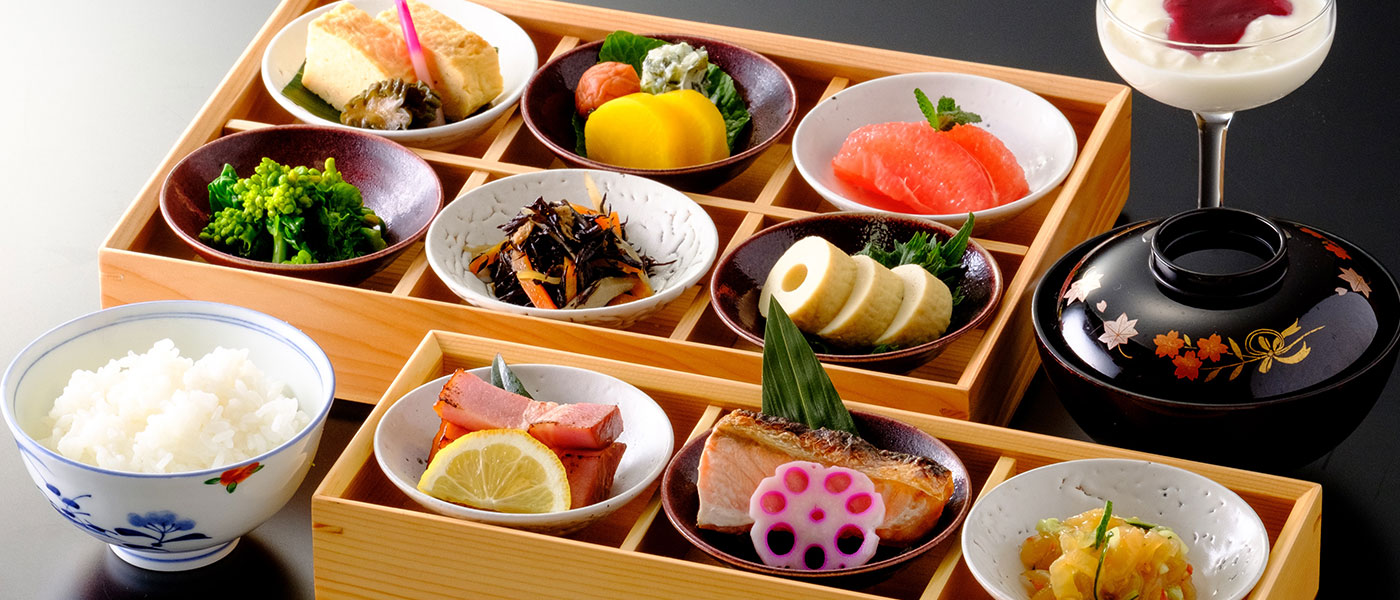
Breakfast hours
7:30-8:30
Using local rice, soy beans and vegetables grown by our contracted farmers and freshly caught seafoods from Japan Sea, we prepare a wide-variety small-portion breakfast. Within our menu, white rice and miso soups are guests’ favorite.
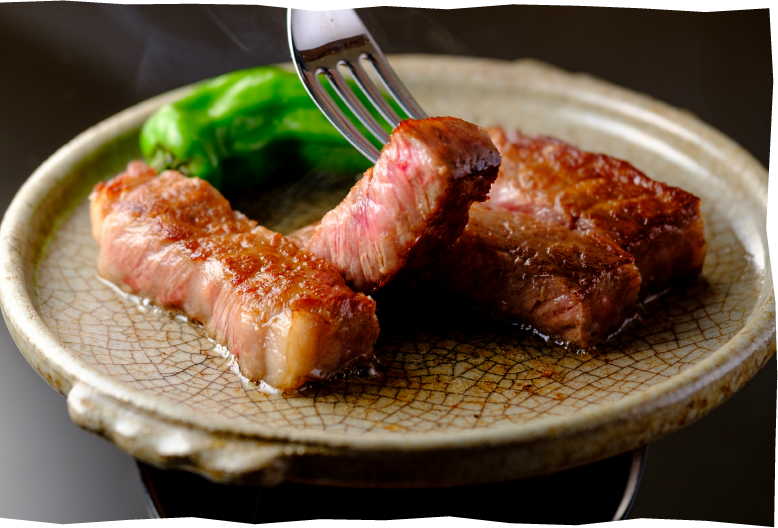
A variety of Tottori’s delicacies and exquisite cuisine Bespoke meals
We have categorized our menus by the theme; seafoods, meats and vegetables. Due to the seasonal availability of the ingredients, please place an order before your stay.
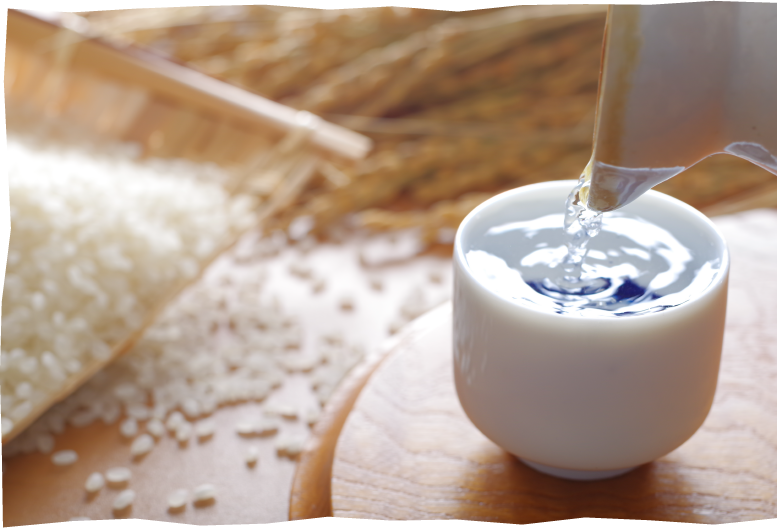
Selection of Tottori and Misasa Onsen’s local brewsSake / local brews
All of our sake, wines and beer are sourced locally. We have other alcoholic beverages and soft drinks as well. We accept beverage orders on the day of your stay.
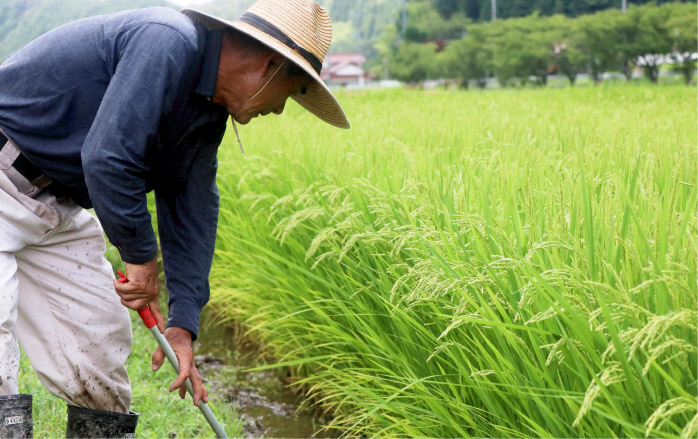
-
Partnering with local farmers
Surrounded by precipitous mountains like Mt. Mitoku, our contracted farmers grow rice in mystical terraced rice fields in the secluded mountains in Misasa. The village is situated in the sunny valley that stretches east to west, blessed with fresh water, air and fertile soil.
Mt. Mitoku is one of Japan’s three main sacred places for Shugendo sect and has a harsh training environment. The farming village is located nearby, experiencing severe temperature differences annually. Rice and soy beans grown in such conditions are full of nutrients. Our contracted farmer’s koshihikari rice is called “Maboroshi no (illusionary) Misasa rice.” We cook these rice with an underground spring water, creating an unforgettable taste.
*Seasonal rice porridge is generally served for dinner. If you prefer white rice, please contact us in advance.
![Radium Hot Spring Kiya Ryokan, Cultural Property inn of Misasa Onsen in Tottori [Official]](/shared/img/common/head_logo.png)
